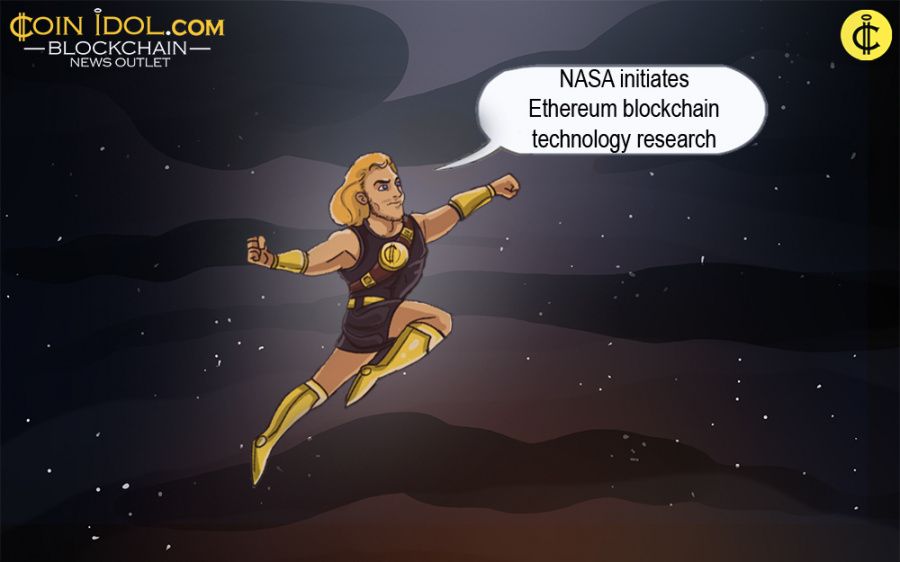NASA Initiates Ethereum Blockchain Technology Research for Space Communications and Navigation
Updated: Apr 19, 2018 at 10:30

The National Aeronautics and Space Administration (NASA) in collaboration with the research University of Akron (UA) in Ohio, USA, just commenced a new research program that will investigate practical applications of Ethereum-based blockchain technology for space communication and navigation.
Ethereum is a decentralized platform that runs smart contracts. Applications are run exactly as programmed without the interference of downtime, censorship, fraud, or third-party interference. These apps run on blockchains that are custom built as a global infrastructure. The main advantage is that developers can create markets without a middleman or other risks.
Blockchain, being one of the most innovative digital applications of the 21st century, is still uncharted territory so there is more to investigate and discover about applications that can be used for the scientific community, and in this case, for the aerospace industry.
A post on the UA website revealed that faculty member Dr Jin Wei Kocsis from the Electrical and Computer Engineering department received a grant of approximately $330,000 for her research on “Resilient Networking and Computing Paradigm(RNCP)”.
This new research project will explore how spacecraft can be more efficient in orbit along with effortlessly collecting and transmitting data. In an official blog post on the UA College of Engineering website, ( https://www.uakron.edu/engineering/ECE/news-detail.dot?newsId=c9a2717e-4327-4dcb-9040-87e788d068c4&p...), Dr Kocsis describes the premise of the research project with NASA which utilizes the revolutionary blockchain technology to enhance space communications and navigation:
“Imagine an unmanned spacecraft operating in deep space, millions and millions of miles from Earth, but having to rely on scientists ‘back home’ to monitor floating debris and then send instructions across all that distance to take evasive action. Given the time involved to successfully accomplish those tasks, as well as the risk of message disruption, it would be far better for the spacecraft to ‘think’ for itself and make those maneuvers without human intervention to avoid a damaging collision.”
Not only will this approach and application reduce the human error factor and mitigate interference or time delays, but she shares other benefits as well.
“In this project, the Ethereum blockchain technology will be exploited to develop a decentralized, secure, and cognitive networking and computing infrastructure for deep space exploration. The blockchain consensus protocols will be further explored to improve the resilience of the infrastructure.”
Additionally, the application will be able to warn of pending environmental disasters which will allow solutions ahead of time to fend them off in a timely manner.
“I hope to develop technology that can recognize environmental threats and avoid them, as well as complete a number of tasks automatically. I am honored that NASA recognized my work, and I am excited to continue challenging technology’s ability to think and do on its own.”
In an interview with ETHNews ( https://www.ethnews.com/ethnews-exclusivenasa-speaks-on-blockchain-technology), the advanced communications program manager at NASA’s Glenn Research Center, Thomas Kacpura, said it’s the first time that a blockchain technology application will be explored for space communication and navigation. If successful, Kacpura explains that it “would support decentralized processing among NASA space network nodes in a secure fashion, resulting in a more responsive, resilient scalable network that can integrate current and future networks in a consistent manner.” Not only that, it will potentially “contribute to the next generation space networks and also allow tech transition of these algorithms for commercial systems.”
The use of Ethereum blockchain technology will be a huge advantage to the aerospace industry. It’s one more application with concrete results from a research project that will be added to the collection of use cases illustrating blockchain technology as the 21st-century ground-breaking invention.
News
News
News
Price
Coin expert

(0 comments)